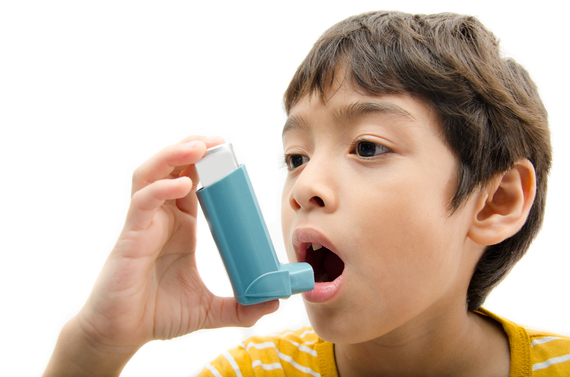It's National Public Health Week, an important time to connect the dots between human health and climate change.
Earlier this week, nearly 1,000 doctors, nurses, researchers and other health professionals from 49 states, Puerto Rico, and the District of Columbia did just that, calling for bold action on climate in a letter delivered to President Obama. "The risks climate change poses to public health have been well-documented," they wrote. The letter, which we joined Physicians for Social Responsibility and the Alliance of Nurses for Healthy Environments to organize, continues:
"Increased temperatures are spreading tropical diseases to new latitudes. Heat waves will likely cause more deaths across the world. Warmer temperatures and increased prevalence of drought threaten to reduce crop yields and lead to food insecurity and water shortages. And more extreme weather events, coupled with sea-level rise, will threaten low-lying cities globally. Detailing these impacts in 2009, The Lancet, one of the world's most respected medical journals, labeled climate change 'the biggest global health threat of the 21st Century.'"
These aren't just future consequences, experienced on the other side of the globe. Americans are already experiencing climate change and its negative health consequences, from higher temperatures and increased smog triggering asthma attacks, to rising seas threatening coastal communities, to increasingly intense rain and snowstorms causing flooding and other damage.
Our recent report, "Dangerous Inheritance: The Hotter, More Extreme Climate We're Passing to America's Young", documents these changes through the perspective of five different generations of Americans.
For example, in every state, young adults today are experiencing warmer average temperatures than young adults in the Baby Boomer generation, with temperatures 1.6 degrees higher across the contiguous United States. Extreme storms and flooding were also more common as Millennials entered adulthood. The biggest rain and snowstorms produced 10 percent more precipitation in 2011 than they did in 1948.
President Obama and his administration have been at the pulpit all week to show how hotter and more extreme weather like this affects public health, and warn that worse changes could be in store. Said the president in his proclamation at the beginning of National Public Health Week:
"America's public health is deeply tied to the health of our environment. As our planet becomes more interconnected and our climate continues to warm, we face new threats to our safety and well-being."
The next day the president, U.S. Environmental Protection Agency Administrator Gina McCarthy, and Surgeon General Vivek Murthy held a roundtable at Howard University Medical School about the public health impacts of climate change. The Surgeon General then took to twitter, urging an online conversation about the same.
Part of the administration's educational effort this week is about what Americans can expect in the face of an already-changing climate. It's how about how we can deal with the negative consequences prescribed by the amount of carbon we've already pumped into the air. That's only fair.
But as the president has also stressed, there's also much to be done to prevent devastating consequences in the future. Scientists predict that without tough action to curb pollution, temperatures could rise in the U.S. alone 5 to 10 degrees Fahrenheit by century's end. That means unthinkable disruptions to society, rendering parts of the country uninhabitable.
To avert this rise in temperature, the United States needs to lead the rest of the world in making deep cuts in carbon pollution and make the switch to 100 percent clean renewable energy.
As part of the president's Climate Action Plan, the Clean Power Plan is a critical step toward that goal. By curbing heat-trapping gasses from coal-fired power plants for the first time, it's the boldest action ever taken to curb global warming pollution. By giving the states the opportunity to replace dirty coal plants with wind, solar and energy efficiency, it can also speed the shift to clean power. And the plan is an essential building block to the success of the president's climate deal with China, formalized last week, which is itself the cornerstone to a broader global agreement.
When it comes to global warming, an ounce of prevention is certainly worth a pound of cure. As National Public Health Week draws to a close, let's keep the focus on how we can prevent the climate crisis and the catastrophic health consequences that could come with it.

